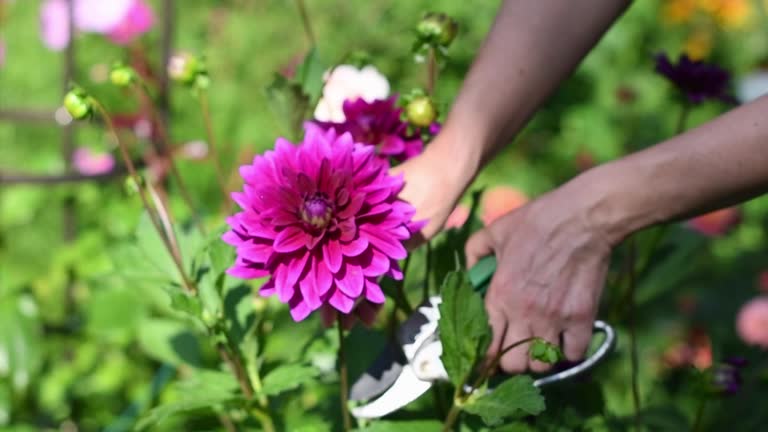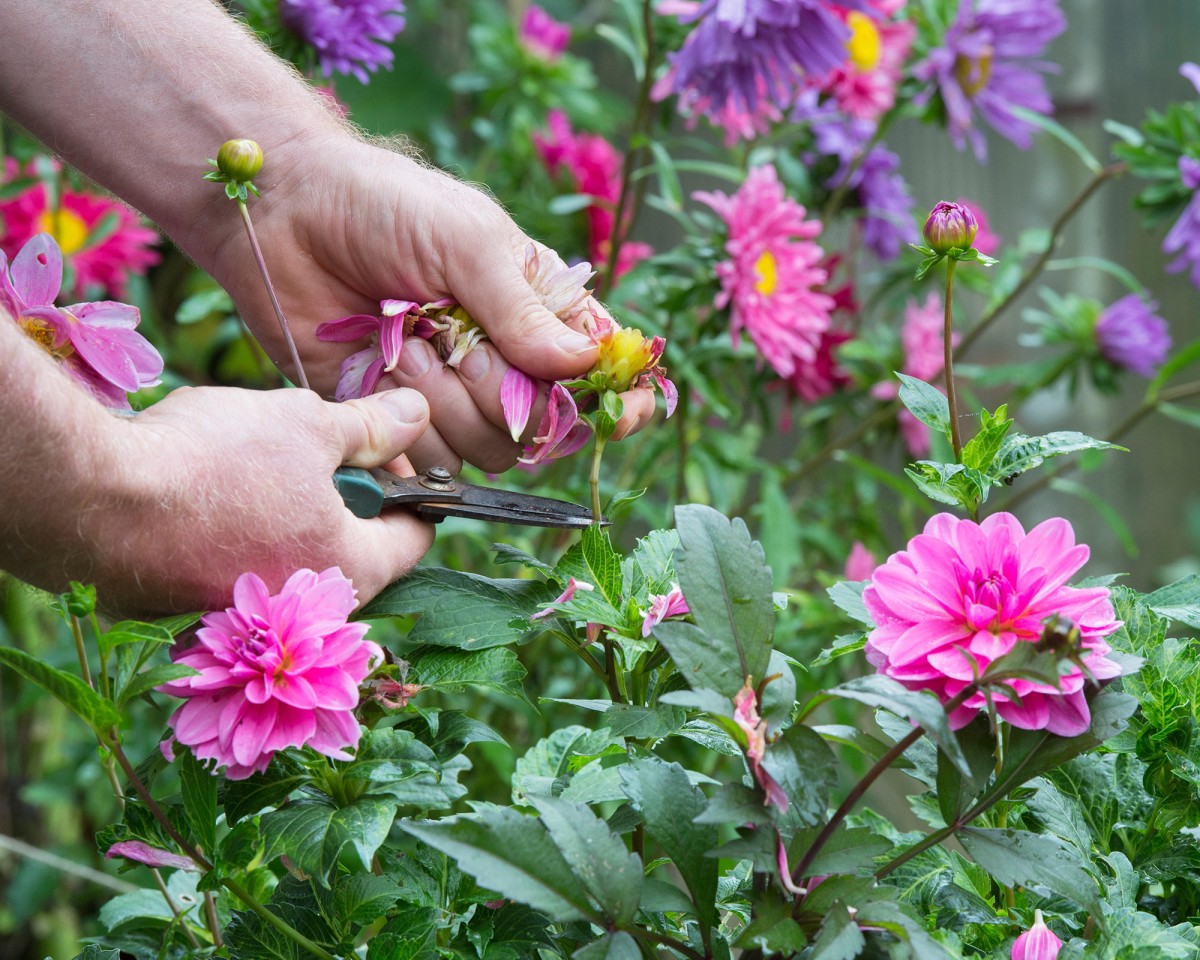Overview
Dahlias are brilliant, ostentatious flowers which brighten up summer and fall gardens with their striking colors and peculiar forms. Whether you are growing dinnerplate dahlias or pom poms, at some point every gardener will ask the question “Do you deadhead dahlias?” The short answer is absolutely yes, and if you do not do it already you are missing the best of these flowers.
This guide will answer the question: what is deadheading, why is it necessary, and how to deadhead dahlias properly and other secrets to help your dahlias keep looking gorgeous all season long.
What Does It Mean to Deadhead Dahlias?
The process of cutting away old, spent, or fading flower blooms of a plant is called deadheading. In the case of dahlias this is an essential procedure to maintain them in good health and flowering as long as possible.
As a flower dies back, it is the natural mode of the plant to divert its energy in producing seeds instead of flowers. However, when you deadhead those exhausted flowers the plant is fooled into believing that it has not completed its blooming cycle. Due to this, it continues to produce new buds.
In other words: no deadheading, fewer flowers.
Regular deadheading = abundant, fresh blooms.
Why Should You Deadhead Dahlias?
Deadheading is important because, first, it encourages new growth on a plant that loves to be pampered such as dahlia.
1. Encourages Continuous Blooming
Dahlias are repeat flowers. When you deadhead the worn out flowers, the plant will reward you by growing more. You may get weeks and even months of additional color in your garden by deadheading.
2. Keeps Plants Looking Tidy
Even the most healthy plant can be littered by old and dried out flowers. By removing them, you maintain a beautiful visual appearance of your garden that is well groomed.
3. Improves Air Circulation
By deadheading old flowers and thinning out the foliage you are allowing the plant to have more air circulation. This minimises fungal diseases, including powdery mildew.
4. Prevents Seed Formation
Dahlias do not require going to seed so as to do well in the same season. Actually, the formation of seeds looks to the plant that its work is completed. Deadheading postpones that process and extends the blooming time.
When to Start Deadheading Dahlias
You can start deadheading once your dahlias start flowering, and this is usually in mid to late summer. Depending on your climate and the time you plant them, some dahlias will flower as early as June, and as late as September.
As soon as you see petals curling or flowers turning brown, reach out to your garden scissors.

How to Deadhead Dahlias
Deadheading dahlias is simple, but there’s a right way to do it for the best results.
Step 1: Identify Spent Blooms
Look for flowers that are:
- Faded in color
- Wilted or drooping
- Browning around the edges
- Losing petals
Hint: A freshly closed bud should not be mistakenly taken as a used flower. A bud is hard and round whereas a fading flower head appears to be soft and loose.
Step 2: Trace the Flower Stem
On the flower, go down the stem to a leaf joint or lateral stem. This is normally 4-6 inches beneath the bloom.
Step 3: Cut at the Right Spot
Take a clean sharp scissors or pruning shears and make your cut just above the leaf node. This promotes new branches and additional flowers to develop.
Step 4: Dispose of the Debris
Deadheaded flowers should not be allowed to litter the plant base. This can either draw pests or mold. Put them in your compost bin or garden waste bag.
How Often Should You Deadhead Dahlias?
In the perfect world, you want to inspect your dahlias every couple of days-particularly, during the height of the blooming season. Frequent care will enable you to notice dying flowers in time and make your plants productive all the time.
Busy schedule? Even weekly deadheading can result in a great difference.
When to Harvest Garlic Scapes for Best Flavor
Common Mistakes to Avoid
Deadheading dahlias is straightforward, but a few common mistakes can limit your success:
- Just Snapping Off the Bloom: Just plucking off the top of the flower, leaving the stem in place does little to prevent the formation of seeds. They should always be reduced to the first leaf joint or bud.
- Confusing Buds with Spent Flowers: New beings frequently cut off unopened buds accidentally. Find time to understand the distinction. Buds are hard and ball-like- spent flowers are wilted and cushier.
- Using Dull or Dirty Tools: Soiled shears may transmit plant disease. Clean sharp tools should be used and disinfected between applications.
- Cutting Too Far Down: When pruning below healthy leaf growth you can prune away future flowering points. cut just above the nearest healthy node.
Can You Deadhead Dahlias Too Much?
Not really. Unless you are pruning off healthy buds or pruning too far, you can deadhead as often as you like, the plant will not be harmed. Quite the contrary, it assists you in keeping in touch with the needs of your dahlia and promotes strong vigorous growth.
When you are doing the deadheading pruning, the more you do it, the more your plant will appreciate it.
:max_bytes(150000):strip_icc()/Dahlias-GettyImages-140343258-5a7b0b8bc064710037bb379f.jpg)
What to Do After Deadheading
After you’ve deadheaded:
- Water the plant if the soil feels dry.
- Feed with fertilizer if it’s been 2–3 weeks since your last dose.
- Check for pests or disease while you’re close to the plant.
Deadheading is also a great opportunity to gently prune back excessive growth and re-shape your plant if needed.
What If You Don’t Deadhead Dahlias?
If you don’t deadhead your dahlias, here’s what might happen:
- The plant puts energy into seed production instead of new blooms.
- Faded flowers remain on the plant, making it look unkempt.
- You’ll get fewer flowers as the season goes on.
- The plant may become more vulnerable to disease.
In short: skipping deadheading equals less beauty and less plant health.
Do All Dahlias Need Deadheading?
Yes, all types of dahlias benefit from deadheading, whether you’re growing them in beds, borders, containers, or as cut flowers. This includes:
- Dinnerplate dahlias
- Cactus dahlias
- Pom-pom and ball dahlias
- Single-flowered dahlias
- Dwarf varieties
Even compact or small-flowering types respond well to regular pruning and deadheading.
Bonus Tip
Why not cut some fresh ones, at the same time you are deadheading the old blooms, and put them in a vase? Dahlias are beautiful cut flowers and the process of cutting them will encourage further flowers on the plant. That is win-win!
Seasonal Wrap-Up
The dahlia plants will automatically reduce production in the growing season which normally stops in early fall. When night temperatures regularly drop to or below 50F (10C), it is ok to reduce the rate of deadheading.
As the season ends, leave a few flowers to dry and seed and you may be interested in harvesting the seeds to experiment with them. In practice, however, most gardeners lift the tubers and over-winter them instead of growing them vis seed.
Final Thoughts
Even a few minutes a week will help keep your dahlias flowering strongly, vividly and healthily well into the autumn. No matter whether you are an experienced gardener or a novice, deadheading is probably one of the simplest ways to have more on your garden with less efforts. Then get your shears and go forth and give some love to those dahlias. In return you will be rewarded with a color show that will last throughout the season.

